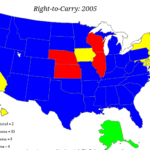
A horrible, painful and unthinkable tragedy has happened again, this time in Santa Fe, Texas. A 17-year-old student Dimitrios Pagourtzis armed with both a shotgun and handgun, went into Santa Fe High school Friday morning and committed a student shooting spree that killed 10 people and injured 13. Student mass school shootings before Columbine were rare, unfortunately, we are now seeing an increase in school shootings since Sandy Hook. There are 3 familiar solutions that school shootings historically bring to mind, they are (1) gun control laws, (2) arming teachers, and (3) adding more armed police officers on school campuses. All 3 have resurfaced as the latest and greatest solutions to stop student school shootings in America. But there is a 4th never mentioned solution to student school shootings in America, a solution that could prevent all future school shooting deaths.
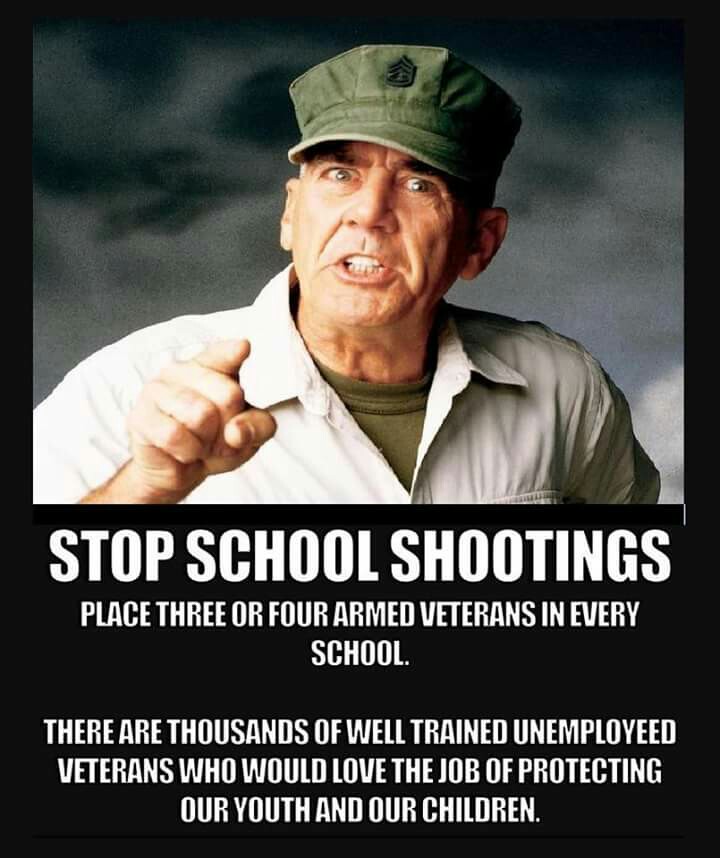
President Trump, the NRA and the Santa Fe Independent School District Board of Trustees all believed that armed guards would prevent school shootings. Last Friday morning Santa Fe High School students tragically found out that armed guards could not stop the shooting
President Trump and the NRA say the solution is more guns, they say making schools gun-free zones is the problem. They propose having armed school police on school premises and arming teachers willing to confront school shooters.
Santa Fe Independent School District agreed with them and implemented an active-shooter plan at Santa Fe High School where Friday’s school shooting took place. Two armed police officers (one of whom was shot and critically wounded) walked the halls of the high school and school district leaders agreed last fall to eventually arm teachers and staff under the state’s school marshal program. They thought they were a hardened target protected against the alarming frequency of school shootings occurring across America, then Friday’s mass shooting happened killing 10 people and wounding 13.

The ten Santa Fe shooting victims
J.R. “Rusty” Norman, president of the school district’s board of trustees expresses the current sentiment of the school district when he said: “My first indication is that our policies and procedures worked,” “Having said that, the way things are, if someone wants to get into a school to create havoc, they can do it.” Santa Fe student shooter Pagourtzis was armed with a pistol and a shotgun during his shooting spree, these firearms are so common to many South Texas homes that he took the ones he used from his own father.

Residents of Santa Fe don’t think the mass shooting that killed 10 of its citizens was caused by lack of gun control laws or guns period, they think peoples lack of religion in their lives is the reason
So there are no calls by Santa Fe residents to ban assault rifles or raise the minimum age for gun purchases, like the ones that came after the shooting three months ago in Parkland, Florida. Santa Fe residents don’t blame any gun for the tragedy, “It’s not the guns. It’s the people. It’s a heart problem,” “We need to bring God back into the schools,” said Santa Fe resident Sarah Tassin.
There is some truth in what Sarah Tassin said about it not being about guns and it is about the people wielding the guns, unfortunately, her solution of religion in schools won’t work for everyone because one person’s God is another person’s devil. But her point about help for individual people is well made and points to the 4th solution to school shootings in America.
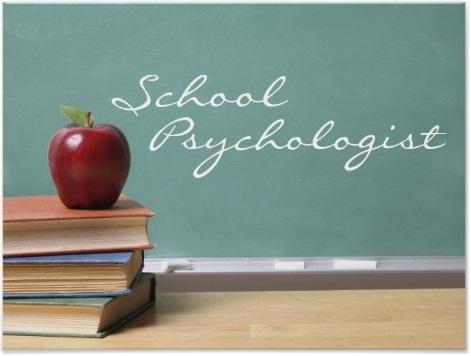
The 4th never mentioned solution to school shootings is SCHOOL PSYCHOLOGIST! All of the school shootings committed by students were done by students currently attending or who formerly attended the school where the shooting took place. All of the student shooters demonstrated behavior signs of future trouble before they committed the school shootings, but no one on the staff at their schools was equipped to deal with it. The response of most schools to signs of future harmful behavior is to seek outside help from either law enforcement or mental health authorities, neither have a day to day knowledge of the student and are prone to wrongly diagnose the student as was the case of the shooter in Parkland, Fla. A school psychologist familiar with the student could intervene before the student’s bad behavior adds another death to school shootings statistics.
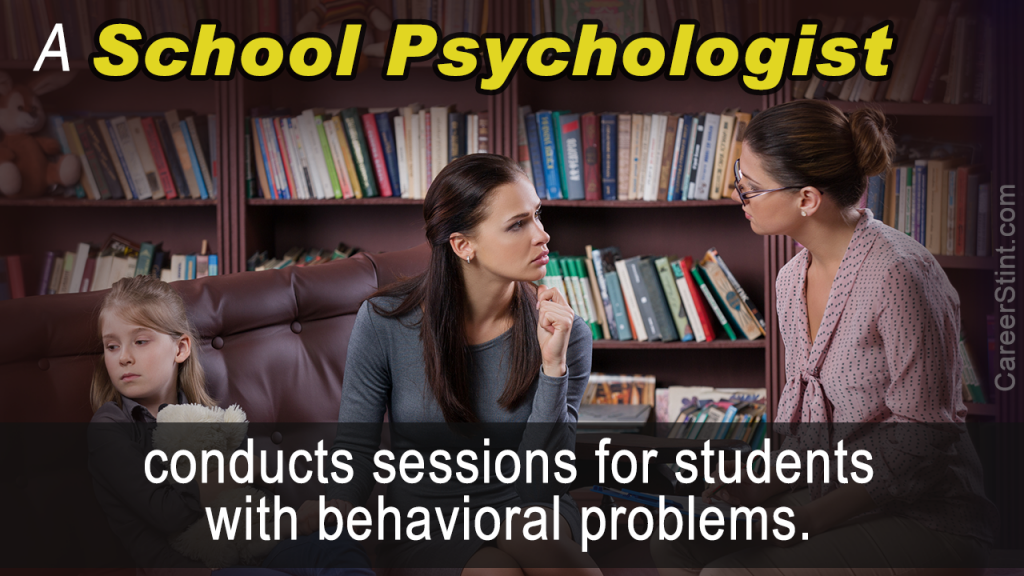
Up to one in five kids living in the U.S. shows signs or symptoms of a mental health disorder in a given year. This means in a school classroom of 25 students, five of them may be struggling with the same issues many adults deal with: depression, anxiety, substance abuse, and yet most children — nearly 80 percent — who need mental health services won’t get them. Whether treated or not, the children go to school with the problems they face creating major problems found in schools: chronic absence, low achievement, disruptive behavior, dropping out, and the worst one of all, school shootings.
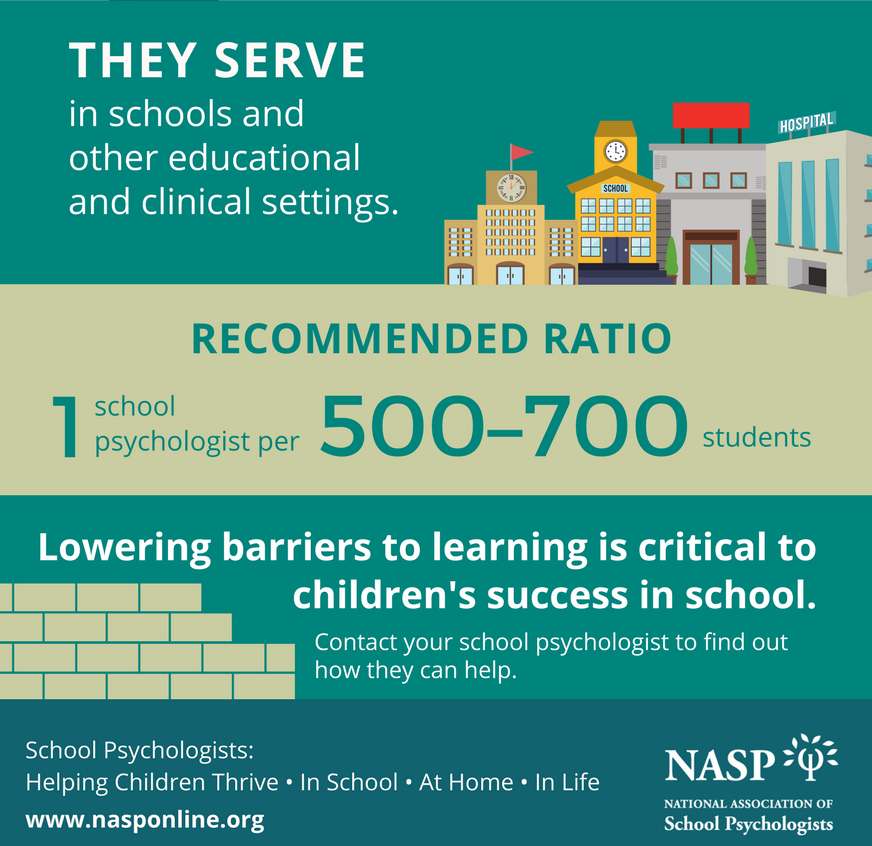
The National Association of School Psychologists (NASP) states the ideal ratio should be one psychologist for every 500 to 700 students — and not exceeding over 1,000 students. This means that every school in America should have at least one full-time school psychologist on site every school day. Unfortunately, no public school in America has its own dedicated on-site everyday school psychologist, the standard practice in American school systems is there is 1 school psychologist that provides care for all the students at several schools.
A study of a new model of behavioral health care that’s taking place in the Milwaukee, Wisconsin Public School System may convince school systems to adopt the NASP standard of 1 school psychologist for every 500 -700 hundred students.
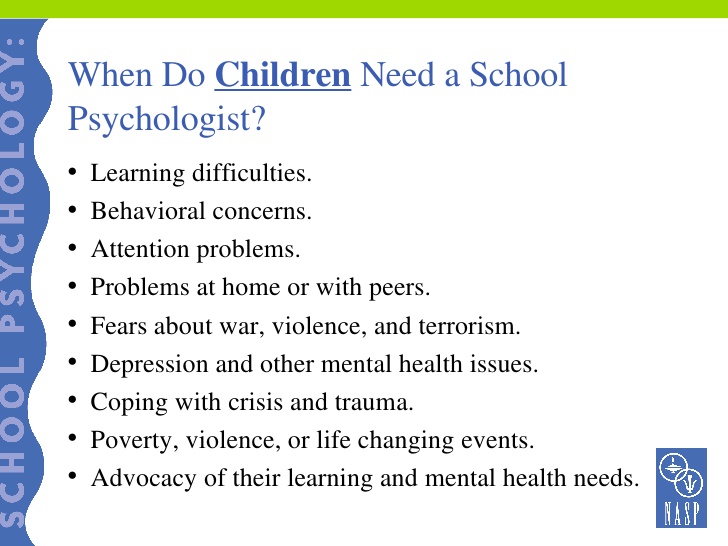
Last year Monica Pendleton felt like her 5-year-old son was in a constant temper tantrum. She’d get calls from his school: He was screaming or kicking tables and chairs, or both. Teachers were at a loss. Pendleton would have to leave work to pick him up. Last month, she told a therapist that her son, now 6, has completely turned around his behavior. “Now, he loves school,” Pendleton told the therapist. “He’s doing so good in school, and now he’s not as negative anymore.”
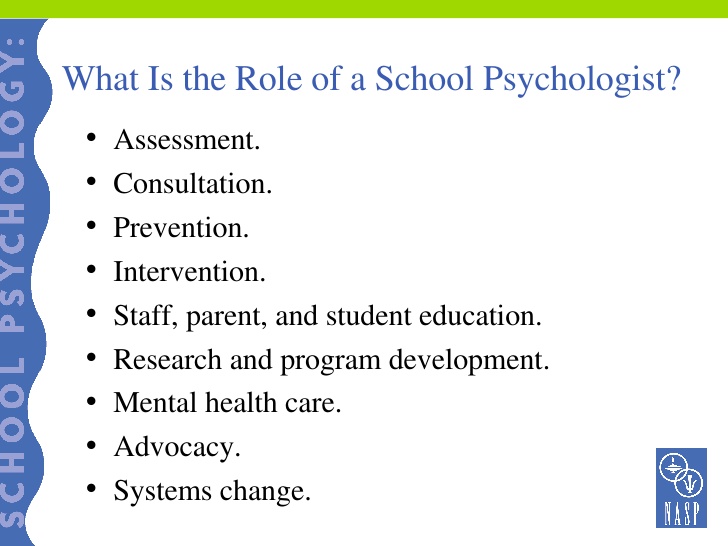
Pendleton and her son are part of a new model of behavioral health care taking hold at several Milwaukee Public Schools. The approach takes therapists out of their clinics and puts them inside schools. That makes the services more convenient and affordable. The model grew in response to the problem of students increasingly coming to school with untreated mental health challenges that interfere with learning. School staff was not equipped to handle severe mental health needs and when they referred families to mental health professionals, too often nothing happened.
“Even though there’s a lot of services in the city, they’re not necessarily accessible,” said Dena Radtke, who oversees social work services for Milwaukee Public Schools. Some parents can’t find time for the appointments, or child care for siblings. Some lack transportation. Families might not have the money, or speak English, or feel comfortable walking into a clinic. When they get past those barriers, families might get stuck on a waitlist. When therapists are located in schools, professionals say, families and more importantly, the children themselves are far more likely to actually get care.
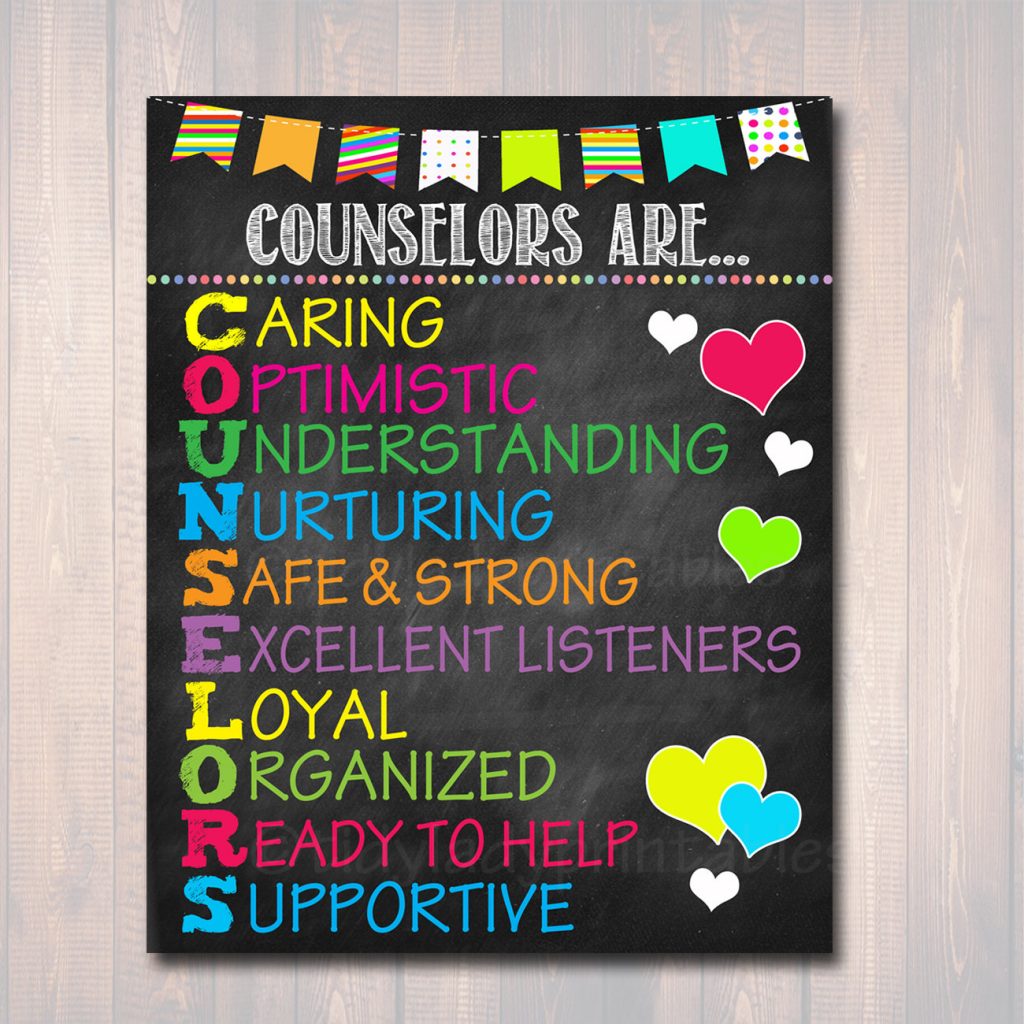
One reason why schools don’t have on-site school psychologist is due to confusion on the difference between school counselors and school psychologist. Most schools, especially on the high school level, have on-site guidance counselors, most people assume that they have the expertise necessary to help students with both the emotional and academic barriers affecting their growth and development. A guidance counselor can overlap with a school psychologist’s role when providing counseling to students, but the traditional role of the guidance counselor is more academic in nature.
Guidance counselors help a student figure out what his or her educational and vocational goals should be, by administering aptitude tests and evaluating what the child thinks they want to do with their life. Based on these discussions, a guidance counselor can help them choose which degree program may best fit those goals. School psychologists work with students to help with emotional or behavior problems. They must be certified by the state where they practice that they have completed a specialized degree program in both psychology and education. This special training makes them uniquely qualified to deal with issues relating to child development and educational interventions.
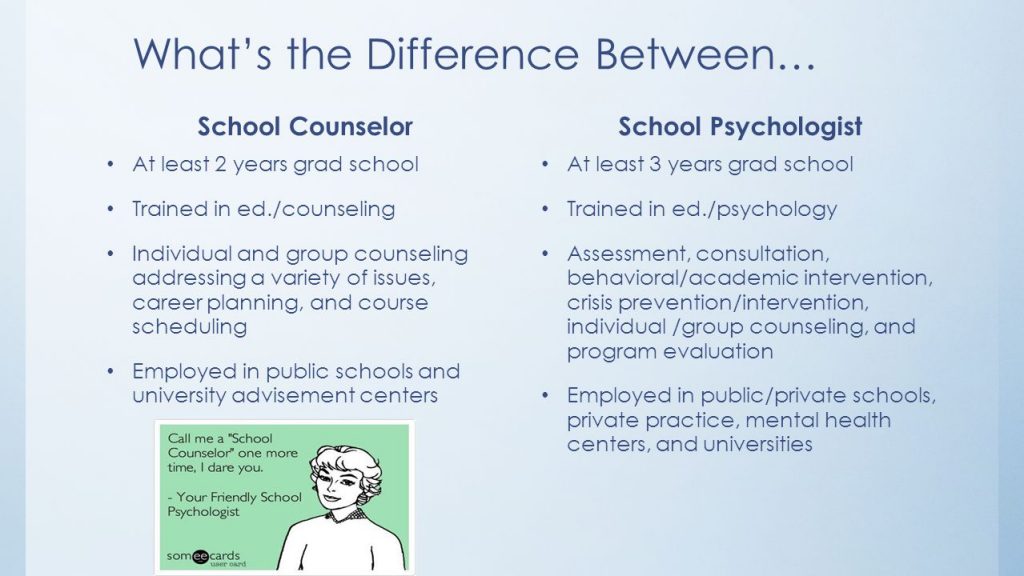
For example, an elementary school student may see a school psychologist for help coping with a divorce in the family. Many school psychologists are now called on to help diagnose ADD and other such handicaps. They work with students and parents to identify learning disabilities and behavior problems that can hold a child back in school, like test anxiety or dyslexia. A school psychologist can also help to identify students who suffer bullying issues they are afraid to admit, or signs of the social rejection and isolation that both the Santa Fe and Parkland shooters felt. School psychologists are trained to know when a student like the Santa Fe and Parkland shooting students are in need of an intervention. Their understanding of the link between school shootings and mental illness could help prevent student school shooting.
Although there is overlap in responsibility between guidance counselors and school psychologists, especially when helping a student deal with mild emotional issues, the two roles have different but complementary functions. The school psychologist is best in dealing with mental barriers to learning, while the school guidance counselor is best in helping students navigate their way through the academic world. They are both an integral part of a child’s mental, emotional, and academic growth.
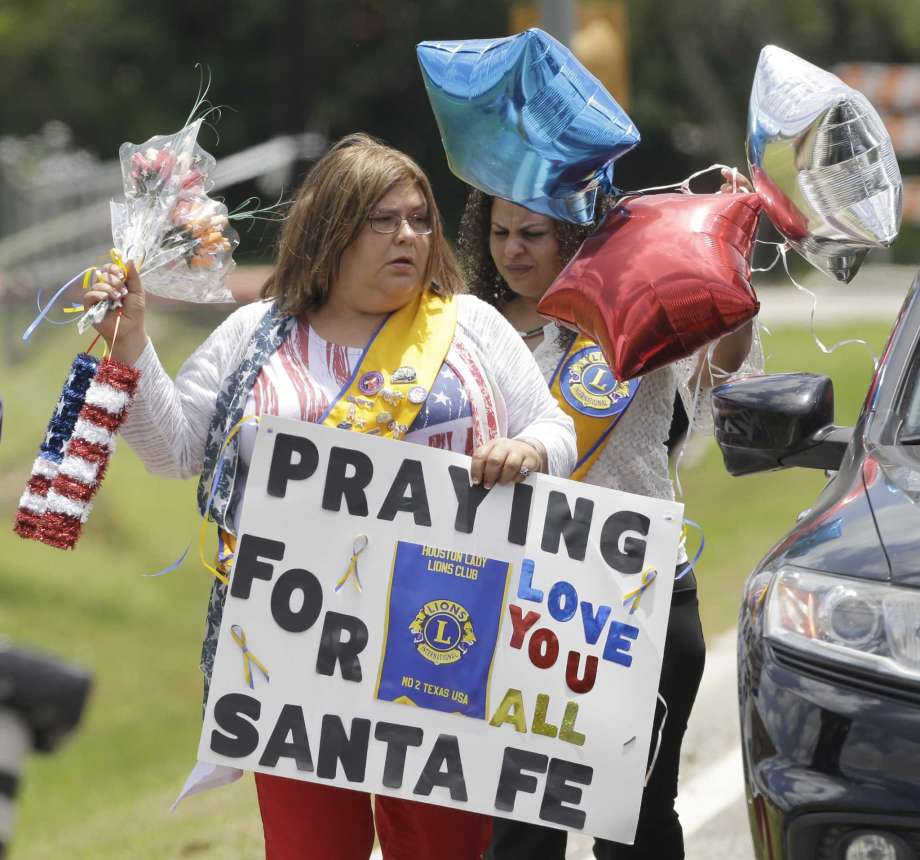
Lady Lions Club members Lucy Gonzales, of League City, left, and Sam Lamboy, of San Antonio, carry memorial items to be placed outside Santa Fe High School Saturday, May 19, 2018, one day after a mass shooting Photo: Melissa Phillip, Staff / Houston Chronicle
Emphasis on both because that’s the realization school systems, March for Lifers, the NRA, President Trump, all politicians especially elected school board representatives, teachers, students and the American public have to accept and pay for! Our schools have to have both a guidance counselor and a school psychologist on-site every day in every school. To borrow and paraphrase a saying from a gun activist about the value of having a gun on-site, if a psychologist can take early intervention steps that save just 1 child’s life who would otherwise have been shot to death, then it’s worth having a school psychologist on-site every day at every school in America!

